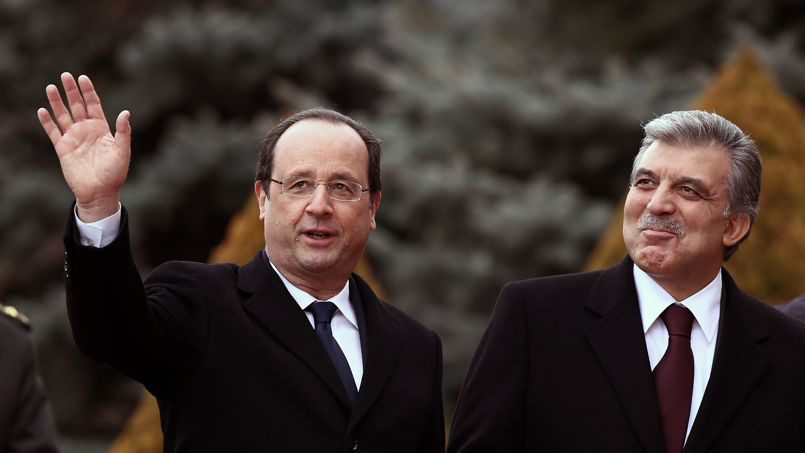Caucasus Heritage Watch’s latest report on Armenian cultural sites targeted by the Azerbaijani regime found a 75% increase in destroyed sites since fall 2023.
Validating experts’ warnings of Azerbaijan’s advanced destruction of Armenian cultural heritage in Artsakh, a new report by Caucasus Heritage Watch (CHW) confirms a 75% increase in destroyed sites across the region since the mass displacement of its indigenous ethnic Armenian population last year, says a story in Hyperallergic.
Through satellite image comparisons between fall 2023, when more than 100,000 ethnic Armenians were forced out of their homeland by the autocratic Azerbaijani regime, and spring 2024, CHW’s latest report draws attention to the destruction of historic schools, burial grounds, and sacred places, and identifies a 29% increase in sites classified as threatened across Artsakh (also known as Nagorno-Karabakh).
“Overall, our spring 2024 monitoring cycle has revealed the greatest number of impacted sites since spring 2021, when we began monitoring cultural heritage following the Second Nagorno-Karabakh War,” wrote CHW’s Principal Investigators Ian Lindsay, Adam T. Smith, and Lori Khatchadourian in a summary. They noted that they had paid special attention to Azerbaijani activity in the Kalbajar district and in the hilltop town of Shushi (known as Shusha in Azerbaijani), which were captured by the regime in the 44-day war in 2020.
Included in the report was the demolition of Kanach Zham church (Armenian for “Green Chapel”) as well as the completed destruction of theGhazanchetsots cemetery in Shushi after CHW data yielded evidence of earlier damages to both cultural sites. At the base of the hill Shushi was built on, a village called Karintak (“Dashalty” to Azerbaijanis) was completely leveled between last fall and April of this year, likely to make way for a new Azerbaijani residential settlement.
CHW, a research initiative led by archaeologists at Cornell and Purdue Universities, has added 181 Armenian heritage sites to its watchlist in the last year. That list now includes 489 locations across Artsakh.
Khatchadourian, the group’s co-founder and an anthropology professor at Cornell, told Hyperallergic that CHW’s locations database is continuously growing as the group assesses its priorities.
“Geolocation is painstaking work that requires multiple sources — maps, satellite images, official documents, photographs — to determine the precise geographic coordinates of cultural sites,” Khatchadourian explained. “There is no room for error in this kind of forensic work. So, we will continue to refine our database and prepare for our next monitoring cycle later this year.”
CHW’s report specifically highlights the destruction of two Soviet-era schools in Tsar andChragh whose structures were inlaid with architectural fragments featuring Armenian art and inscriptions from other buildings. The demolition of 9th- and 13th-century khachkars (carved Armenian cross-stones) from a long-ruined church at the Kohak sacred place near Chartar and the destruction of the 19th- to 20th-century Ghuze T’agh Cemetery near Aknaghbyur are also discussed.
Additionally, the group added five churches and two cemeteries to the list of threatened locations, bringing the figure from 24 sites in December 2023 to 31 as of June 2024. CHW attributed the elevated risks to the seven additional sites to recognizable construction or demolition activity around the area, or because they possess unmistakably Armenian features such as inscriptions.
CHW also called attention to Azerbaijani President Ilham Aliyev’s intentions of restructuring the region of Artsakh into a “green energy zone” in 2021 — a plan that has been accelerated due to the petrostate’s capital city of Baku having been selected to host the 29th United Nations Climate Change conference in November 2024.
“[The conference] has become an engine for fast-tracking development projects that Azerbaijan will use to ‘greenwash’ its well-documented record of human rights, environmental, and heritage abuses,” the group wrote.
CHW researcher Ian Lindsay, an anthropology professor at Purdue University, told Hyperallergic that CHW urges conference attendees “to not only safeguard humanity’s environmental future, but also its irreplaceable past.”
“Development in Nagorno-Karabakh should not become a screen for cultural erasure,” Lindsay wrote in an email. “There are clear pathways for Azerbaijan to become a role model for environmentalism in the Caspian region if it chooses to take them, paths that minimize the human and environment costs of development in the Karabakh region and that don’t erase the rich multicultural heritage of the region.”











